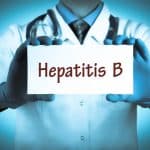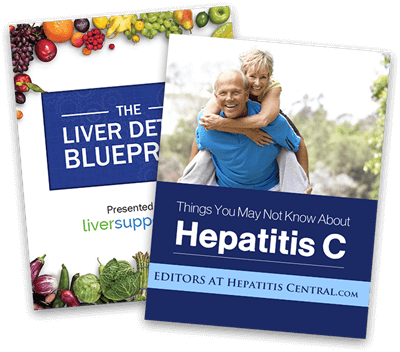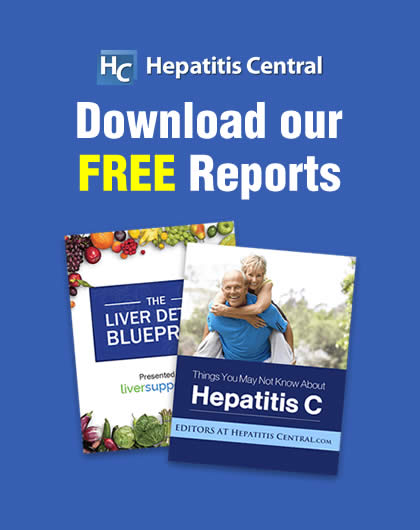Tarvacin Studied for HCV
Tarvacin(TM) starts with Phase I study against Hepatitis C Virus
Aug 8, 2005, 17:40
“Tarvacin(TM) is truly a novel approach to treating HCV and we are eager to offer patients the opportunity to participate in this trial.”
By Peregrine Pharmaceuticals, Inc., Enrollment Open for Patients Chronically Infected With Hepatitis C Virus (HCV)
Peregrine Pharmaceuticals, Inc. (Nasdaq: PPHM), announced today the initiation of a phase I anti-viral study of Tarvacin(TM), the Company’s first Anti-Phospholipid Therapy candidate. The phase I study is an open-label, dose-escalation study in up to 32 adult patients with chronic hepatitis C virus (HCV) infection who either no longer respond to or failed standard therapy with pegylated interferon and ribavirin combination therapy.
The objectives of the trial are to evaluate safety, pharmacokinetics and viral load following a single intravenous infusion. The study is being conducted at Bach and Godofsky Infectious Diseases, the largest private infectious disease practice specializing in the treatment of viral hepatitis in the United States. Bach & Godofsky is located in Bradenton, FL.
“Tarvacin(TM) is truly a novel approach to treating HCV and we are eager to offer patients the opportunity to participate in this trial,” stated Eliot W. Godofsky, M.D., Principal Investigator and clinical assistant professor of medicine at the University of South Florida in Tampa.
“This study is an important step for our Tarvacin(TM) antiviral program,” said Joseph Shan, Peregrine’s senior director of clinical and regulatory affairs. “Meanwhile, we are continuing our Tarvacin(TM) development efforts for other viral diseases.”
CJ Gaddy Comments:
Anyone interested the fight against HEP-C should be aware of the phase1 study of TARVACIN initiated 8-8-05 at Bach & Godofsky Infectious Diseases in Bradenton, FL., with Dr. Eliot W. Godofsky as principle investigator.
[news: http://tinyurl.com/cltum ]Trial Title: “This phase I study is an open-label, dose-escalation study in up to 32 adult patients with chronic Hepatitis C virus (HCV) infection who either no longer respond to or failed standard therapy with pegylated interferon and ribavirin combination therapy.”
Go to the Tarvacin website to learn about Tarvacin and the HEP-C Trial:
http://www.tarvacin.com – click “Patient Resources” to bring up the TARVACIN overview page. Then click TARVACIN-FOR-VIRUSES how Tarvacin anti-viral works. Note the TARVACIN-FOR-CANCER button – Tarvacin treats both cancer and viruses! Phase I Trial info. (for both Cancer and HEP-C) are further down the left column, including eligibility req’s and Peregrine contact info:
Ph: 800-694-5334, email: clinicalaffairs@peregrineinc.com
Also, ClinicalTrials.gov has more info. on this Tarvacin HEP-C Trial:
http://clinicaltrials.gov/ct/show/NCT00128271
Site Contact: Bach & Godofsky, Bradenton Ph: 941-746-2711 x39
The primary goal of this Phase1 trial is, of course, to prove safety, but read carefully how they worded the trial objectives: “To determine safety and tolerability, characterize blood pharmacokinetics and viral kinetics, define the maximum tolerated dose (MTD) and/or maximum effective dose (MED)”. It SEEMS (my opinion only) the scientists are expecting to see efficacy even at initial low phase1 dosages. To see why they may think so, read about Tarvacin anti-viral animal results presented at BIO2005 6-22-05: http://tinyurl.com/dqf9t
Tarvacin Background:
TARVACIN is a monoclonal targeting antibody drug developed by Dr. Philip Thorpe of UT-SW/Dallas, whose research is funded by Peregrine Pharmaceuticals, the NIH/NIAID (Infectious Diseases), the USAMRIID (BioDefense), and the Susan G. Komen Breast Cancer Foundation. Scientifically, Tarvacin is the chimeric form (mostly human, part mouse) of the Anti-Phosphatidylserine (Anti-PS) antibody “3G4”, the lead product under Thorpe’s Anti-Phospholipid Therapy (APT) platform.
Tarvacin is effective against both CANCER and VIRUSES. A great simple explanation of Tarvacin’s MOA was written by Michael Brush 7-28-05:
“The cells in our bodies are contained by membrane made up of phospholipids which normally know how to position themselves in the right way. But in cancerous cells these phospholipids get confused. Many of them end up on the outside of the cell. That turns them into great targets – if you want to shoot a missile at a cancerous cell inside the body to kill it. A similar thing happens in cells infected by many common viruses. These viruses replicate by entering cells, reproducing in the nucleus, and then exiting the cell. On the way out, however, they get enveloped by parts of the membrane from the host cell. Again, this confuses phospholipids in the membrane of the virus cell, and the phospholipids wind up on the outside of cells. That creates another great target if you want to launch an attack. The key compound that knows how to zero in on target cells is called Tarvacin.”
[M.Brush article: http://tinyurl.com/9z7yf ]
You read right: Tarvacin’s universal nature makes it able to attack and destroy ALL SOLID CANCER TYPES, as well as ALL ENVELOPED VIRUSES (ex: Hep/B+C, Influenza, Pneumonia, SARS, HIV/AIDS, Ebola, Marburg, Lassa…).
In addition to the HEP-C trial that is the subject of this email, a Tarvacin phase1 trial to treat ALL-SOLID-CANCERS was initiated 6-10-05 at The Arizona Cancer Center: http://ir.peregrineinc.com/phoenix.zhtml?c=74236&p=irol-newsArticle&ID=719219
The U.S. Gov’t is highly interested in the ANTI-VIRAL side: On 4-4-05, following an 8-2003 $1.68mm grant to Thorpe to test 3G4 against Lassa Fever, the NIAID announced their testing labs will screen Peregrine’s APT agents, including Tarvacin, for activity against a “broad spectrum of enveloped viral pathogens” of health and bioterrorism concern, including Herpes viruses, respiratory viruses, pox viruses, HEP B/C, Papillomavirus and viruses of biodefense concern including Pichinde, Yellow Fever, West Nile and Dengue. [NIAID: http://tinyurl.com/5ntcm & http://tinyurl.com/8k9qj ] On 7-21-05, the U.S. Army’s USAMRIID announced they will test Tarvacin against Ebola & Marburg Viruses, under the direction of Dr. Thomas W. Geisbert, Chief, Dept. of Viral Pathology and Ultrastructure at USAMRIID, Fort Detrick, MD.” [Army: http://tinyurl.com/8ny2g ]
Most critically, animal tests suggest Tarvacin is very safe: extensive primate tests have shown no signs of toxicity until dosage is raised to 10x predicted therapeutic dosage. We all know safe Primate testing is a long way from safe Human testing, but Thorpe’s comment here is encouraging, “The phospholipids that 3G4 recognize have the same structure and cellular distribution in different mammalian species, simplifying the transition from experimental animals into humans.” [ http://tinyurl.com/5ntcm ] Well, these two Phase1’s are about to tell us about safety.
On the ANTI-VIRAL side as well, another important statement about Drug Resistance from Michael Brush’s article, “Most of the excitement right now surrounds potential treatments of the so-called “enveloped” viruses – the ones that envelope themselves with bits the host cell membrane as they exit the host cell. The “enveloped” viruses read like a top10 list of diseases you’re most likely to get, and really don’t want. They range from influenza and Hepatitis B+C, to herpes, West Nile, Dengue, HIV, SARS, Avian flu and many of the potential bio-terror “hemorrhagic” viruses, like Ebola. A great thing about Peregrine’s approach is that viruses can’t mutate to fight off the Tarvacin attack. That’s because Tarvacin keys in on anomalies in the cell membrane – the confused phospholipids — that viruses don’t know how to fix. “Since it is not made by the virus, it is not mutable by the virus,” says Peregrine’s CEO Steven King. “It is not something the virus can change, to get away from therapy.”
Virologist Dr. Stephen Smith (Chief of Infectious Diseases, St. Michael’s Medical Center), a Peregrine advisor, said 2-8-05, “this approach represents an entirely new way of combating infectious diseases. Instead of targeting viral proteins, Peregrine’s product attacks altered, endogenous phospholipids. Therefore, drug resistance cannot develop.” [ Dr.Smith: http://tinyurl.com/9qwen ]
In closing, here are a few links that you might find interesting to learn more about Dr. Thorpe’s APTs, beyond the current HEP-C trial:
www.peregrineinc.com – Peregrine Pharmaceuticals website
http://ir.peregrineinc.com/phoenix.zhtml?c=74236&p=irol-news – Press Releases
http://tinyurl.com/b9hdq – my amateur compilation of Articles, Quotes, etc.
http://tinyurl.com/6yz4x – investment board, but iBox News section up top is accurate
Compiled by:
cjgaddy@earthlink.net
Note: I am a retired computer guy, a follower for years of Phil Thorpe’s discoveries (not just APTs!), as well as an investor in Peregrine. I do these compilations of facts and opinion strictly on my own, and am in no way endorsed or supported by Peregrine or any of Peregrine’s scientists. Everything I put together is factual or the documented opinion of experts, publicly available, and backed by web links to reputable sources. If I make an error, or fail to provide a link, please email me and I’ll correct it immediately.








1 Comment
“Bradenton Doctor chips away at HEP-C”
By: Kathleen Mclaughlin, Sarasota Herald-Tribune – Sept. 27, 2005
http://www.heraldtribune.com/apps/pbcs.dll/article?AID=/20050927/BUSINESS/509270322
This article is a nice profile of Dr. Eliot Godofsky’s “Bach & Godofsky Infectious Diseases Clinic” (Bradenton, FL), the “largest private infectious disease practice specializing in the treatment of Hepatitis in the USA”. They also have a large HIV/Aids clinic.
I find it interesting that of the dozens of HEP-C trials Godofsky conduct each year (including Idenix’s promising NM283), the only one singled out in the article is the TARVACIN Phase I trial initiated in August. Recall that Tarvacin is an Anti-PS/3G4 agent developed by Dr. Philip Thorpe of UT-SW/Dallas. These extracts about Tarvacin from the article:
“Godofsky has expanded the scope of the practice [beyond HIV/AIDS] and has become an expert on Hepatitis. Part of that includes doing early-stage drug trials, such as the one for Peregrine Pharmaceuticals that began Aug. 29 2005… He hopes to help find something that will work for the roughly 50% of people who don’t respond to treatment, which involves a yearlong course with debilitating side effects… There are 12 to 15 companies trying to develop new drugs, and many of them contact Godofsky’s office for trials. Godofsky thought Peregrine’s drug, Tarvacin, looked promising. The small California company realized the antibody treatment it was developing for cancer tumors might work against Hepatitis and other viruses. The Bradenton doctor agreed to the trial because the drug seems to have low toxicity, and it’s a novel approach: Patients will get one intravenous injection of the antibody, which might block the virus from invading liver cells and remove the virus from the body.”
THE COMPLETE ARTICLE:
BRADENTON, Sept 27 2005: When Eliot Godofsky started treating viral Hepatitis in 1996, about 10% to 15% of patients could be cured. After the introduction of some new drugs, that rate is up to 50%. Godofsky likes those numbers, but he knows they could be even better. “HIV is controllable. Hep-C is potentially curable.”
That’s why his Bradenton-based medical office – the nation’s largest infectious disease practice specializing in viral Hepatitis – runs 10 to 20 drug trials a year. Private practice physicians get involved in clinical research for many reasons: money, experience with cutting-edge treatment, access to drugs for patients.
Godofsky says his prime motivator is fundamental: “The benefit to me is to cure people who thought they were incurable.”
The 46-year-old came to Bradenton to join Michael Bach, a pioneer in HIV/AIDS treatment who died of melanoma in 1998. Bach & Godofsky, M.D. PA, which now employs 6 other doctors, still staffs the HIV/AIDS clinic that Bach opened in Manatee County. But Godofsky has expanded the scope of the practice and become an expert on viral Hepatitis. Part of that includes doing early-stage drug trials, such as the one for Peregrine Pharmaceuticals that began Aug. 29.
He hopes to help find something that will work for the roughly 50% of people who don’t respond to treatment, which involves a yearlong course with debilitating side effects.
The virus: The Hepatitis C virus is more widespread than HIV, but it gets relatively little attention. About 4 million people in the USA are infected with Hepatitis C, while about 1 million have HIV. No national fund like the one established by the Ryan White CARE Act for HIV pays for Hepatitis drugs. Treatment, not including lab work, costs about $20,000 per year, Godofsky said.
There are a lot of drugs under research for Hepatitis C, but there is not a high-profile, independent center testing them head-to-head, said Lisa Ball, executive director of the Hepatitis Resource Network, a doctors education group.
Sharing needles is the most common cause of the illness, representing 60% of new infections. Although commonly associated with illegal drug use, Hepatitis crops up unexpectedly in many middle-aged people because the disease can stay in the body for 10 to 20 years without causing anything more than flu-like symptoms, said Michelle May, the nurse practitioner who runs clinical trials for Godofsky.
Some patients trace their risk back to recreational cocaine use, in which they shared straws, May said. One woman’s only identifiable risk factor was the fact that she was a seamstress. She might have pricked her finger on a needle used by someone else. A lot of people don’t realize they can be cured. Some go through the treatment, only to find themselves among the “non-responders.” “The worst part of my job is helping them through 12 months of therapy, then 6 months later having to call and say, ‘Your virus is back,'” May said.
There are 12 to 15 companies trying to develop new drugs, and many of them contact Godofsky’s office for trials.
Godofsky thought Peregrine’s drug, Tarvacin, looked promising. The small California company realized the antibody treatment it was developing for cancer tumors might work against Hepatitis and other viruses.
The Bradenton doctor agreed to the trial because the drug seems to have low toxicity, and it’s a novel approach: Patients will get one intravenous injection of the antibody, which might block the virus from invading liver cells and remove the virus from the body.
Supporting treatment:
Godofsky was drawn to research as an intellectual pursuit, but he has become an expert on the ins and outs of using it to support the practice. He gave a presentation on it last year at the annual meeting of the Infectious Diseases Society of America. Listed among the reasons for doctors to get involved in trials was “cost-effective income production.” The medical office gets “good” reimbursement for patient visits and lab reviews with limited billing and collections overhead. Doctors spend no time with managed care, Godofsky notes.
One of his tips on setting up a budget for a clinical trial was “do not be afraid to negotiate.” “Physicians are not usually terrific businessmen,” but can be, Godofsky says. Research is not a profit center, Godofsky acknowledges, but by using it he can support the staff required to care for the disease. Treating viral Hepatitis requires a lot of patient monitoring and education. It can also be very complicated. About 10% of viral Hepatitis sufferers also have HIV. Doctors know little about how the drugs used to treat the two viruses separately might interact. Making a living at that kind of medicine is difficult, said Ball, the executive director of the Puyallup, Wash.-based Hepatitis Resource Network (http://www.h-r-n.org/ ). “There’s no procedure, so it’s not particularly well-reimbursed,” she said. “But patients have lots of questions.” Many doctors don’t want to be involved.
Godofsky is on the board of directors of the organization, which was started in 1997 to raise awareness of Hepatitis C among physicians. Infectious disease doctors proved to be more interested in the disease than liver or intestinal doctors, Ball said. They are used to dealing with trying to get paid for the time they spend consulting, and many, like Godofsky, do it for the intellectual challenge. Bach is what brought Godofsky to Bradenton: “He had that zest or lust for research.” After his partner died, Godofsky said, he worked 7 days a week, 20 hours each day for the subsequent year and a half. “I kept the research going. I kept the HIV care going. I gradually added more and more doctors.”
Now the 7 doctors, including Godofsky, cover the three hospitals in Manatee County and the Michael Bach Treatment Center. They also work with Infectious Disease Associates of Sarasota. Bach and Godofsky also runs a wound care center and a large outpatient IV clinic. The IV clinic, which is open every day, sees 80-100 people each day. Godofsky estimates that he has a patient base of about 1,000 and that he accepts about 300 new patients a year.
Patients: Michelle May, the nurse practitioner who runs trials for Godofsky, does not have to recruit patients, even for early phase trials where the focus is on establishing safe doses, not treatment. “They clamor to do these phase-one trials,” she said. “They want to make something good out of something bad.”
Fort Lauderdale resident Philip Younger is the kind of patient who would benefit from a breakthrough drug. He’s among the 50% who didn’t respond to treatment, even after 3 courses. The 56-year-old was diagnosed with the disease in 2000 and soon started treatment: three shots a week of one drug, interferon, and 6 pills a day of another, Ribavirin.
Younger, hurt on his job moving furniture, took work as a telemarketer to accommodate the side effects: headaches, fever, muscle aches and loss of appetite. He went on three medications to counteract the insomnia and depression. During that time, Schering-Plough came out with an improved drug, and he tried that, too. Younger went through 15 months of treatment, but the virus came back six months after the treatment ended. Younger tried another company’s drug. That didn’t work, either. “It’s a freaky virus,” he said.
Younger, who now works for a patient advocacy group called Hep-C Alert (http://hep-c-alert.org ), said the treatment at least bought time for his liver, which showed no cirrhosis in his latest biopsy. “I live right, eat right, hope for the best and counsel people on Hepatitis,” he said. Younger said that if he could take the time off work, he would join a trial now. “I’ve always said I would shoot toothpaste if it would get rid of this virus,” he said.
*end*
= = = = = = = = = = = = = = =
Repeat of Tarvacin HEP-C Ph1 Trial Info:
The phase1 study of TARVACIN was initiated 8-8-2005 at Bach & Godofsky Infectious Diseases in Bradenton, FL., with Dr. Eliot W. Godofsky as principle investigator. [news: http://tinyurl.com/cltum ]
“This phase I study is an open-label, dose-escalation study in up to 32 adult patients with chronic Hepatitis C virus (HCV) infection who either no longer respond to or failed standard therapy with pegylated interferon and ribavirin combination therapy.”
tarvacin.com – click “Patient Resources” to bring up the TARVACIN overview page. Then click TARVACIN-FOR-VIRUSES how Tarvacin anti-viral works. Note the TARVACIN-FOR-CANCER button – Tarvacin treats both cancer and viruses. Phase I Trial info. (for both Cancer and HEP-C) are further down the left column, including eligibility req’s and Peregrine contact info:
Ph: 800-694-5334, email: clinicalaffairs@peregrineinc.com
ClinicalTrials.gov has more info. on this Tarvacin HEP-C Trial:
http://clinicaltrials.gov/ct/show/NCT00128271
Site Contact: Bach & Godofsky, Bradenton, FL: 941-746-2711 x39
“Dr. Philip Thorpe’s Lab, Peregrine, NIAID/NIH, and the USAMRIID (U.S. Biological Defense Research Pgm.) take dead aim on ALL ENVELOPED VIRUSES (ex: Hep/B+C, Influenza, Avian Flu, Pneumonia, Herpes, SARS, HIV/AIDS, Ebola, Marburg, Dengue, Lassa) with Anti-Phospholipid Therapy (APT) agents, like Anti-PS/3G4/Tarvacin, which are “surprisingly effective in inhibiting the entry, replication and the spread of viral infections.”